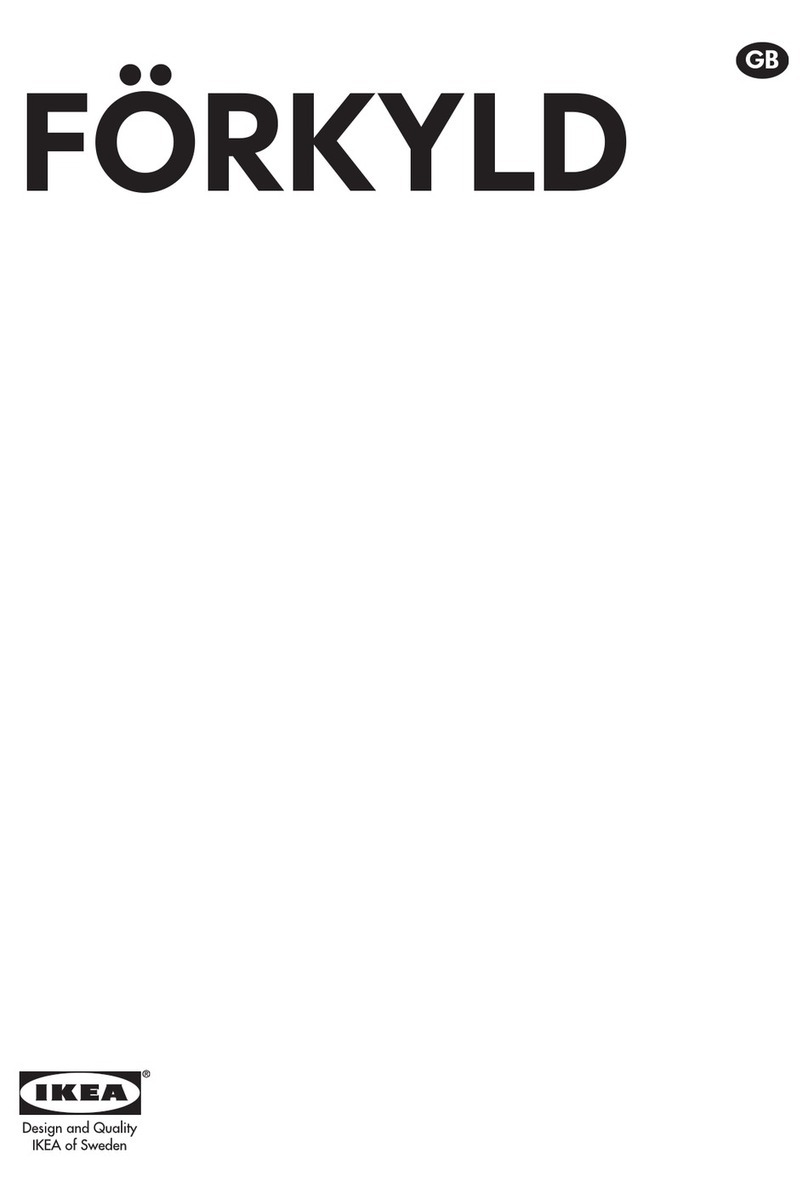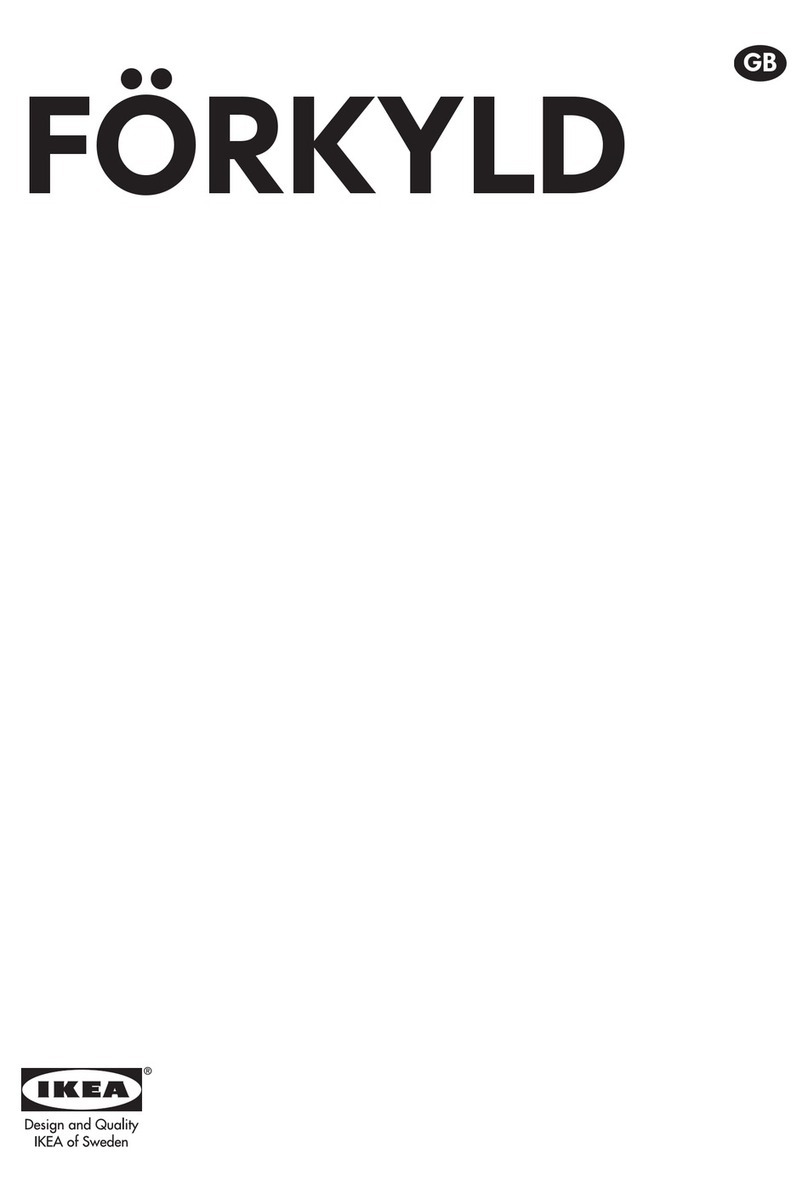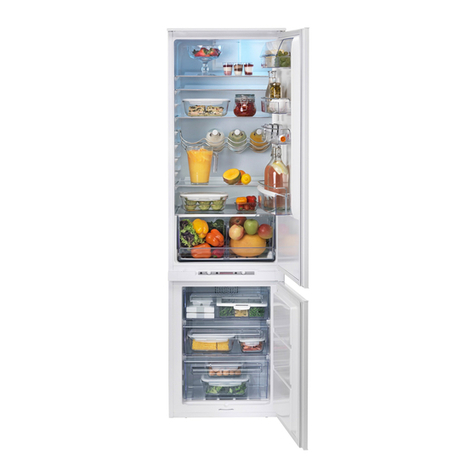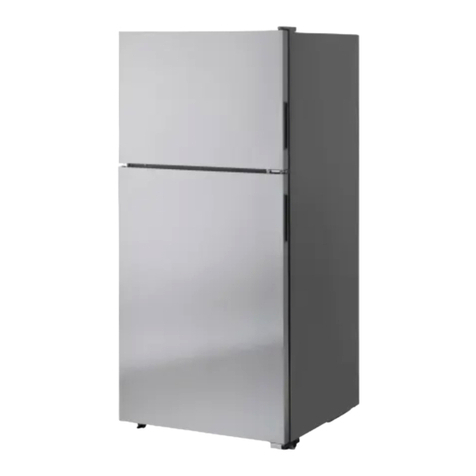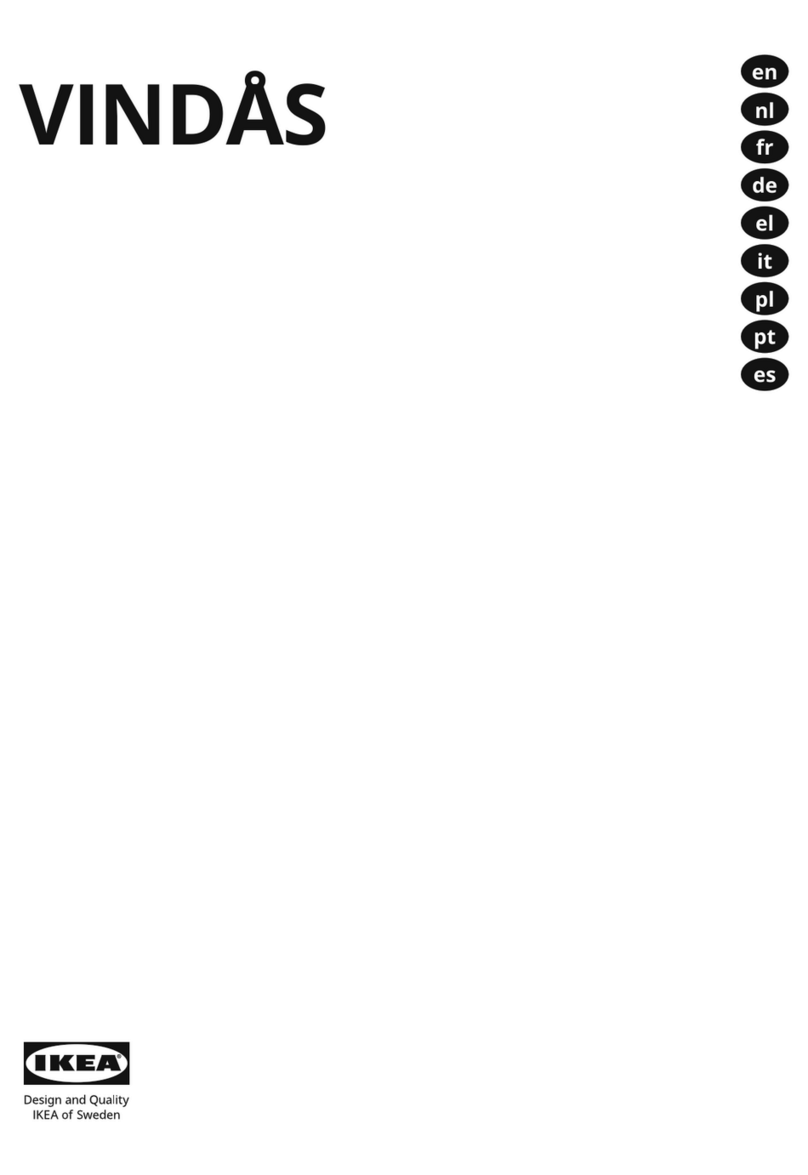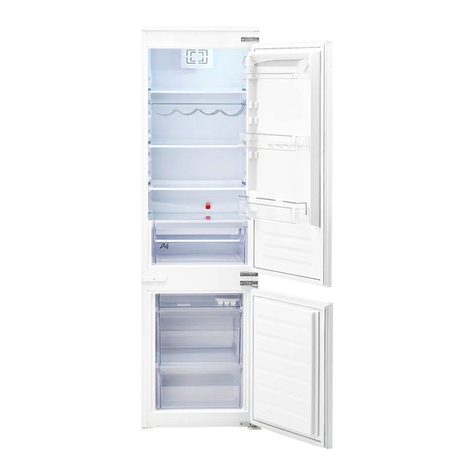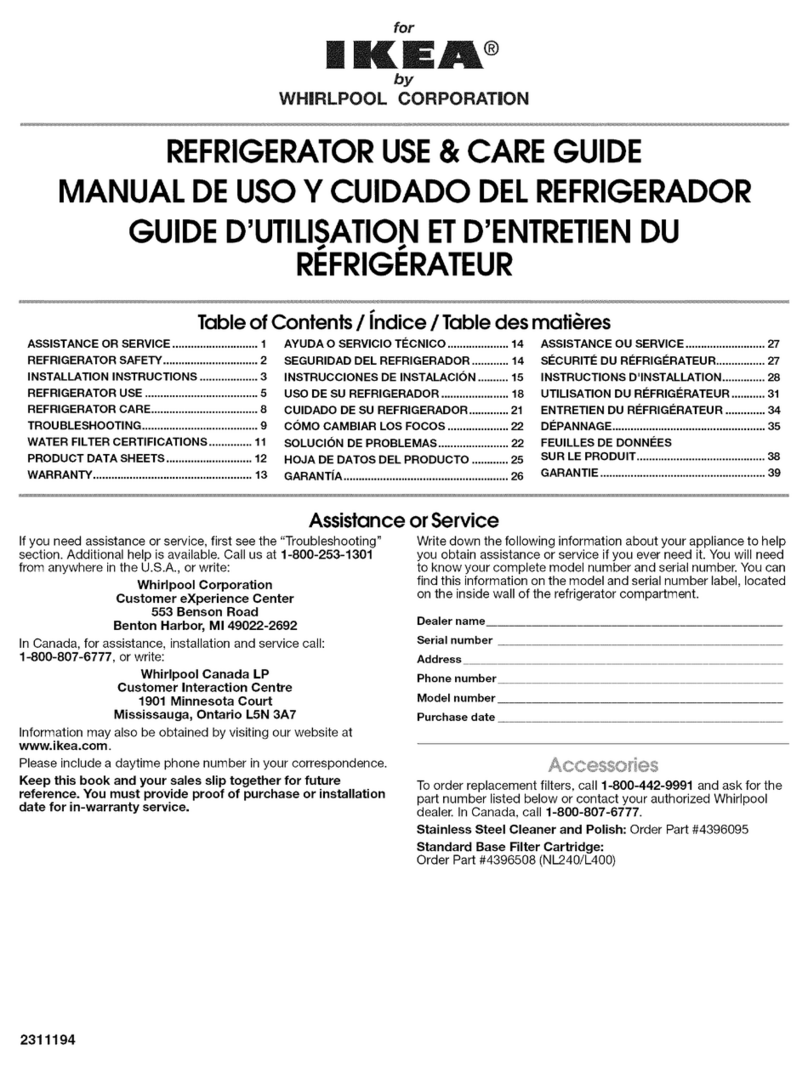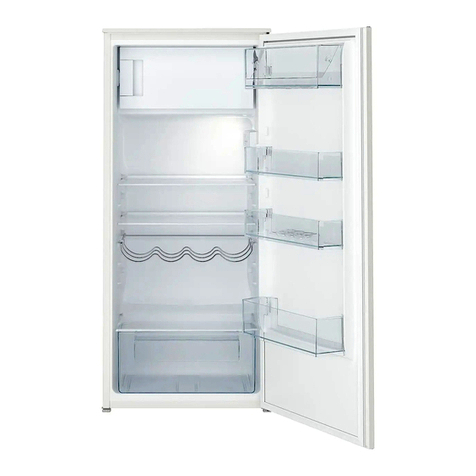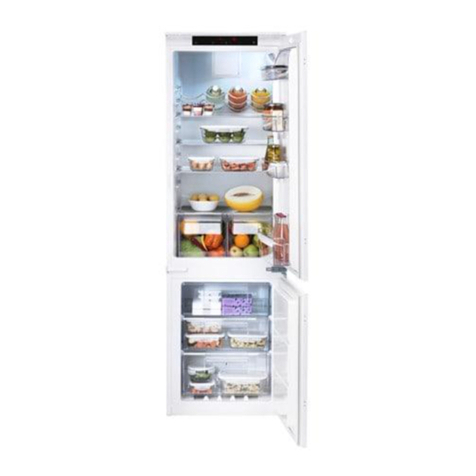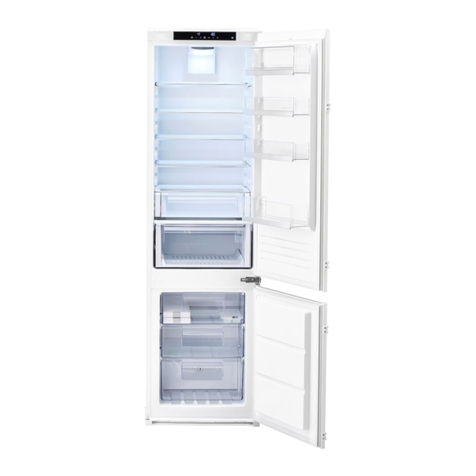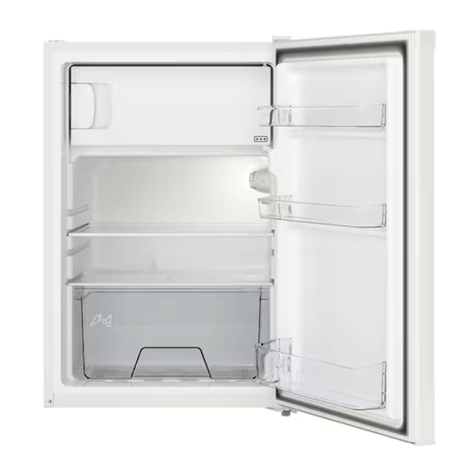5
■All installations must meet local plumbing code
requirements.
■Do not use a piercing-type or 3/16" (4.76 mm) saddle valve
which reduces water ow and clogs more easily.
■Use copper tubing and check for leaks. Install copper
tubing only in areas where the household temperatures will
remain above freezing.
■For models with water lters, the disposable water lter
should be replaced at least every 6 months.
Water Pressure
A cold water supply with water pressure of between 35 and 120
psi (241 and 827 kPa) is required to operate the water dispenser
and ice maker. If you have questions about your water pressure,
call a licensed, qualied plumber.
Reverse Osmosis Water Supply
IMPORTANT: The pressure of the water supply coming out of
a reverse osmosis system going to the water inlet valve of the
refrigerator needs to be between 35 and 120 psi (241 and
827 kPa).
If a reverse osmosis water ltration system is connected to your
cold water supply, the water pressure to the reverse osmosis
system needs to be a minimum of 40 to 60 psi (276 to 414 kPa).
If the water pressure to the reverse osmosis system is less than
40 to 60 psi (276 to 414 kPa):
■Check to see whether the sediment lter in the reverse
osmosis system is blocked. Replace the lter if necessary.
■Allow the storage tank on the reverse osmosis system to
rell after heavy usage.
■If your refrigerator has a water lter, it may further reduce
the water pressure when used in conjunction with a reverse
osmosis system. Remove the water lter. See “Water
Filtration System.”
If you have questions about your water pressure, call a
licensed, qualied plumber.
Connect the Water Supply
Read all directions before you begin.
IMPORTANT:
■Plumbing shall be installed in accordance with the
International Plumbing Code and any local codes and
ordinances.
■The gray water tubing on the back of the refrigerator
(which is used to connect to the household water line) is
a PEX (cross-linked polyethylene) tube. Copper and PEX
tubing connections from the household water line to the
refrigerator are acceptable, and will help avoid off-taste or
odor in your ice or water. Check for leaks.
If PEX tubing is used instead of copper, we recommend the
following Whirlpool Part Numbers:
W10505928RP (7 ft [2.14 m] jacketed PEX)
8212547RP (5 ft [1.52 m] PEX), or
W10267701RP (25 ft [7.62 m] PEX).
■Install tubing only in areas where temperatures will remain
above freezing.
■If you turn on the refrigerator before the water line is
connected, turn off the ice maker to avoid excessive noise
or damage to the water valve.
Connect to Water Line
1. Unplug refrigerator or disconnect power.
2. Turn OFF main water supply. Turn ON nearest faucet long
enough to clear line of water.
3. Find a 1/2" to 1¹⁄4" (12.7 mm to 31.8 mm) vertical cold water
pipe near the refrigerator.
IMPORTANT:
■Make sure it is a cold water pipe.
■Horizontal pipe will work, but the following procedure
must be followed: Drill on the top side of the pipe, not
the bottom. This will help keep water away from the drill.
This also keeps normal sediment from collecting in the
valve.
4. Determine the length of copper tubing you need. Measure
from the connection on the lower right rear of the
refrigerator to the water pipe. Add 7 ft (2.1 m) to allow
for cleaning. Use 1/4" (6.35 mm) O.D. (outside diameter)
copper tubing. Be sure both ends of copper tubing are cut
square.
5. Using a cordless drill, drill a 1⁄4" hole in the cold water pipe
you have selected.
6. Fasten the shutoff valve to the cold water pipe with the pipe
clamp. Be sure the outlet end is solidly in the 1/4" drilled
hole in the water pipe and that the washer is under the pipe
cl. Tighten the packing nut. Tighten the pipe clamp screws
slowly and evenly so the washer makes a watertight seal.
Do not overtighten.
7. Slip the compression sleeve and compression nut on
the copper tubing as shown. Insert the end of the tubing
into the outlet end squarely as far as it will go. Screw
compression nut onto outlet end with adjustable wrench.
Do not overtighten or you may crush the copper tubing.
8. Place the free end of the tubing in a container or sink, and
turn ON the main water supply. Flush the tubing until water
is clear. Turn OFF the shutoff valve on the water pipe.
F

